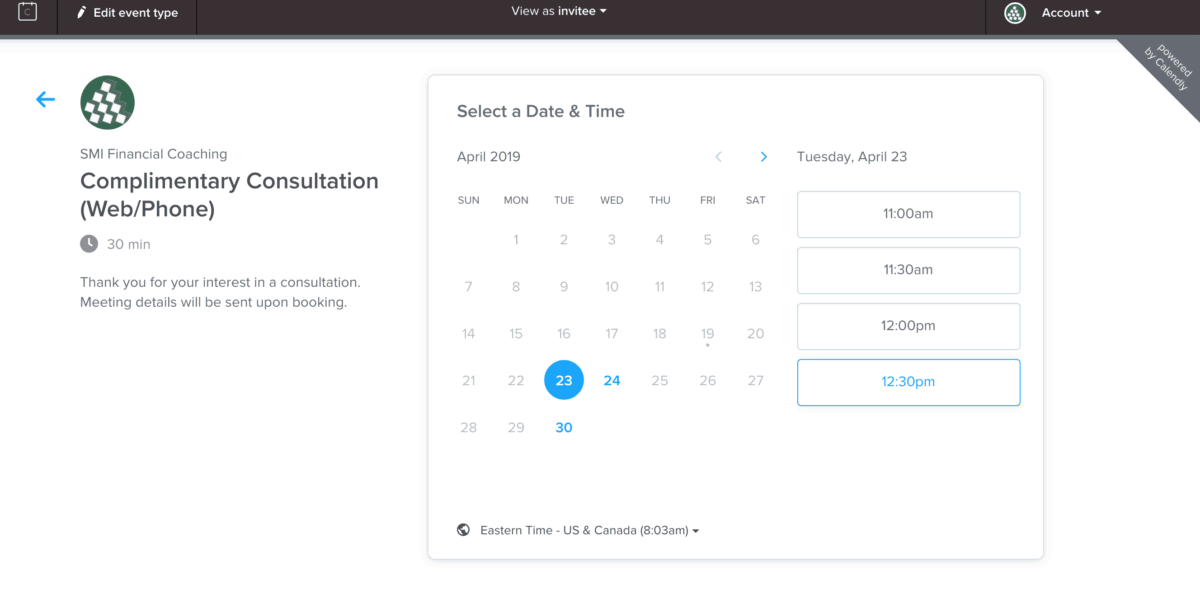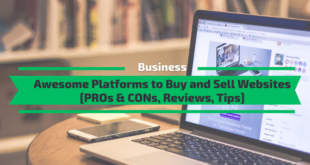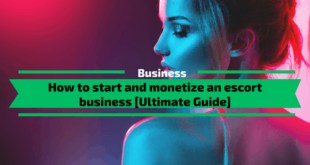Let’s talk today about the free consultation.
You may have been told not to give your time away for free. It’s good advice because giving your expert advice away can cost you more than just time; it can cost you money.
But those who insist free consults are a waste of time are missing the point entirely. A free consultation isn’t giving away your expertise for free; it’s a tool for gathering leads and — if you do it right — driving sales.Whether you are selling professional services, loans, and financing, or physical products, you need to have a plan to make free consultations work. Having a plan applies to businesses that are booming (like finance and trading) and those that have been struggling since the coronavirus pandemic.
So how do you turn free consults from frustrating sessions where you feel taken advantage of, into a powerful sales tool you can use to close deals and grow your business?
Here’s what you need to know.
Table of Contents
#1. Creating an effective consultation
The problem with most free consultations is the business owners don’t take the time to outline what exactly a free consultation is, and what the prospect can expect to get from it.
This next section will walk you through how to stop giving away your time and instead, start using it to drive sales.
Sounds good, right?
Here’s how to turn a free consultation into a money-making business strategy.
1.1 What is the goal of the free consultation?
Before you schedule your very first free consultation, take the time to outline what the point and goal of the consultation will be.Now, it may vary slightly depending on the client and your business model.
- For example, if you offer marketing services, one prospect may want to know who else you’ve worked with and the results you achieved, while another wants to know how you can personally help them.
- In another scenario, a company that specializes in moving businesses might want to explain what clients can expect to pay and in return, how much stress they’ll save them.
- A SaaS company will want to quickly determine the level of experience of the caller and explain how the product can help them achieve their goals.
These sound like very different conversations, but they aren’t.
At the core, both clients want to know “Why should I choose you?” Your goal is to establish trust and highlight your unique value proposition.Be clear on the goal and desired outcome of the call before you begin. For example: “Provide an opportunity for the caller to ask questions about our program and close the sale.”
And remember that you’re also seeking to further qualify them during the call. For example, if you have several programs or software packages that you’re selling, you’ll be looking to make the right match for the customer and achieve related upsells.
1.2 What will the consultation cover?
Setting expectations is the best way to make sure both you and your prospective client are happy with the way the consult goes.
You want your prospect to be excited about the outcome of your free session. But you also want them to have realistic expectations of what is – and isn’t– possible to achieve during the consultation. This is why outlining the scope of your consultation is critical to success.
So before verifying the call, make sure to outline:
- How long the call will last (aim for 10-15 minutes)
- The purpose of the call
- The specific result your prospect will get by the end
- What steps they can take afterwards to maximize the results of the consult
For example, a nutritionist would want to make it clear that the consultation won’t cover sample diets or workout routines — those are for paying clients. But they may walk away with an idea of what imbalances might be causing their weight loss or questions the client should ask their doctor.
1.3 What questions should I ask prospects before a free consultation?
A great way to filter out irrelevant prospects and figure out what your callers want is to have them fill out a short application form before scheduling your free consultation.
You can easily set up such questionnaires with appointment-booking software like Calendly. When clients click to book the appointment, they’ll choose from an available time first, and then answer the questions you specify.

This will help you understand the prospects’ needs and expectations and provide some key discussion points for your call.
Depending on your business and industry, you might ask:
- What challenges do you face?
- What have you tried to solve this problem?
- What is holding you back?
- What size business do you have?
- What is your budget?
For example, a business coach might ask a client’s prior experience with coaching or key challenges their business is facing. These answers will allow them to offer a comprehensive solution to the problems keeping them from growing their business.
1.4 What benefits do you have to offer?
Most free consultations are built with the intention of educating the prospect. Which sounds good, right? Not really. Educating a potential customer is nice, but education doesn’t close deals.
![Must Read Books For Every eCommerce Entrepreneur [+ Video Summaries]](https://monetize.info/wp-content/uploads/2020/08/Must-Read-Books-For-Every-eCommerce-Entrepreneur-Video-Summaries.webp)
Emphasize the value of the consultation by using language like:
- Set up a free consultation to learn how much you could save on grocery costs!
- Our free consultation is the first step towards a debt-free life!
- Ready to get your business on track? Call now for a free consultation.
Then, deliver on the small solution.
For example, a nutritionist might mention that switching from coke to sparkling water can save 150 calories a day, which will kick start the client’s weight loss goals.
Or, a business coach might suggest using the Pomodoro Technique to stay focused. These small solutions help the client — without giving away your entire program or offering for free.
1.5 Plan your answers to common objections
Draft out a list of objections that clients may have to your product.
If you offer a business service, this may include the fact that they aren’t sure what results they will get. Here’s where you can point them to long lists of testimonials on your site or perhaps on YouTube.
Make sure you have any cost benefits worked out and ready to present.
Does your product or service save the client over the long-run?
How so?
Why is your solution better than your competitors’?
1.6 Ask for the sale
Depending on your sales funnel, your free consultation may be an intermediary step or the time when you close the deal.
Remember, the entire point of the free consultation is to make sales, not make friends. Building relationships with your audience is important, but a free consultation is, first and foremost, a sales tool.
So prepare to answer objections beforehand, and practice asking for the sale. Even if it feels awkward at first, you’ll soon become accustomed to it.
Also, consider adding an urgency factor such as “I can only offer this price until the end of this week.” Urgency factors can encourage the prospect to prioritize focusing on making the decision.
1.7 Follow Up
Once the consultation is over, you’ll need to follow up with the prospect. Consider sending a follow-up email with a list of resources, a downloadable guide or worksheet, and a brief breakdown of the points you covered.
If your prospect was indecisive, be sure to ask for the sale again.
Tell them what the next step is to sign up for your paid offering. Make it easy for your prospective client to sign up for the next step.
A business coach might ask clients to join a paid membership site, or a social media marketing professional might ask clients to sign up for a paid social media account audit. Whatever the next step is, make sure it moves them towards an actual purchase.
#2. Free consultation mistakes to avoid
Do you already offer a free consultation? Or maybe you are considering it, but aren’t sure how to make sure it actually works? Avoiding these common pitfalls will put you on the path to success. (And sales!)
2.1 Don’t be vague
Too often, free consultation offers are so vague that the prospect has no idea what value they will receive. Your prospect may be wondering, “Your business seems legitimate, but can you really offer what I need?”
Even if your website provides insights into your methods, unless the prospect is able to see exactly how you can resolve their specific problem, they won’t be compelled to opt-in for your free consultation.
If your call to action is just “Book a free consultation”, consider providing a detailed description of what to expect during the call. For example, “Book a free consultation to learn how to…” or “Schedule your call to find out how I can save you X per month.” Get really specific on what they will gain.
2.2 Not filtering out bad prospects
One of the biggest challenges in offering free consultations is the word “Free.” Free is good – but it also tends to attract freebie-seekers who just want to “pick your brain.”
Here are a few tips to protect your time so you can focus on truly invested prospects that are more likely to convert:
- Adjust your copy to attract the right clients. Spend time crafting a strong headline and compelling copy that directly speaks to your target client and their pain point. You can also ask people to fill out a longer application form that gives you the information you need to get on the phone and speak directly to their needs, wants and desires.
- Create a barrier to entry. You want to attract people who are invested in what you’re offering, not people who are just after free advice. Don’t make it too easy. For example, require they fill out a detailed form with several questions before booking a call.
- Include a FAQ sheet: Have easy information that you can send via email to answer those common questions that don’t require a phone consultation.
- Be clear about what the consultation includes and the time: This will weed out people who are just looking for a free solution and help you attract prospective clients who are serious about your offer.
For many people, time is a more valuable currency than money. The pre-qualification process weeds out the tire kickers from the action takers and allows you to invest more time with each prospect because you know they are actually interested in what you have to sell.
2.3 Disorganization
It doesn’t take much of a pipeline to lose track of calls and next action steps. If this is you, take a week to get clear.
- Booking the call: Try a simple system such as a link from your site to Calendly (free) for people to book a consultation.
- Keeping track: You might also want to consider sales software like Pipedrive. Every time you log into Pipedrive you can see exactly what the next action steps for each client.
- Be ready when you’re on the go: Whatever software you’re using for your consultations, make sure you have notifications and relevant apps set up on your mobile phone. For example, Pipedrive has a mobile app and Calendly can send notifications and reminders to your business email account.
2.4 Giving too much upfront
Start by making sure your calls are the right length for your business. You want enough time to offer value and get to know your client, but not so long that you waste hours of productive time on folks who won’t sign up.
There is no perfect length for a free consultation, but a 15-minute call is fairly standard. However, you might be able to draw in more consults by offering 30 minutes if your competitors are offering less.
Keep in mind that just because the offer is for 20 minutes, it doesn’t mean you can’t get the job done quicker. But, advertising longer calls can show you are willing to go the extra mile. (However, if you find the calls start veering into “free advice” territory, it might be time to trim the time offer!)
2.5 Not being clear on what you can offer
We’ve already covered setting expectations about the call, but don’t forget to set expectations about what you have to offer. Making sure prospects know what you do – and don’t – offer, will help protect everyone’s time.
A life coach, for example, is not a doctor. You won’t be recommending medications or treatment plans for mental illness. If you do social media marketing, you might need to be clear that you don’t do paid ads or SEO.
Setting expectations on what you offer does the double duty of deterring people who aren’t a good fit while reassuring relevant leads that you are just what they need.
2.6 Not having an effective streamlining process
- What happens when someone signs up for a consult?
- Do you go back and forth trying to pick a time?
- Or, do you use an app to let them pick their own time?
- When do they fill out a form with more information?
- Do you have everything you need before the call takes place?
All of these steps take time. And if you are using consults as a sales tool, you’ll want to make this process as painless as possible. Look for tools that can help streamline and automate the process so you can focus on clients, not waste hours on people who haven’t even signed up yet.
This applies to both before and after the free consultation.
- What happens after the consultation?
- Do you send out a pricing sheet or brochure?
- How do they pay?
Is there an email sequence you can create to make the process easier and deliver documents they might need?
These steps help instill confidence in your brand and make it easier to scale your processes.
#3. Start building your free consultation today
Free consults are a powerful sales tool when you know how to leverage them correctly. They can help free you up to focus on “fanatical prospecting.”
The tips above will help you get started and avoid the most common mistakes that businesses make. This will let you spend more time closing sales and less time talking to people who have no intention of actually signing on the dotted line.
Need some inspiration on how your consulting business page should look like? Check my monetization consultant profile or the affiliate marketing consulting service page.
Don’t forget to capture data about your leads and track conversion rates and revenue. This will give you valuable feedback you can use to improve your free consult offer in the long run! Monetize.info We Help You Grow & Monetize Your Online Business!
Monetize.info We Help You Grow & Monetize Your Online Business!

![How to Turn Free Consultations Into Paying Clients [Complete Guide]](https://monetize.info/wp-content/uploads/2020/07/How-to-Turn-Free-Consultations-Into-Paying-Clients-Complete-Guide.webp)



![10 Ways To Find a Buyer for Your Online Business [With Examples]](https://monetize.info/wp-content/uploads/2024/04/10-Ways-To-Find-a-Buyer-for-Your-Online-Business-With-Examples-310x165.webp)

